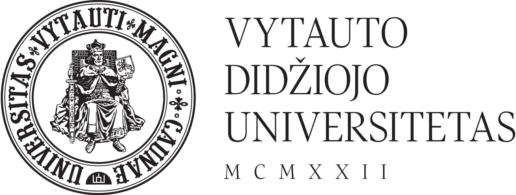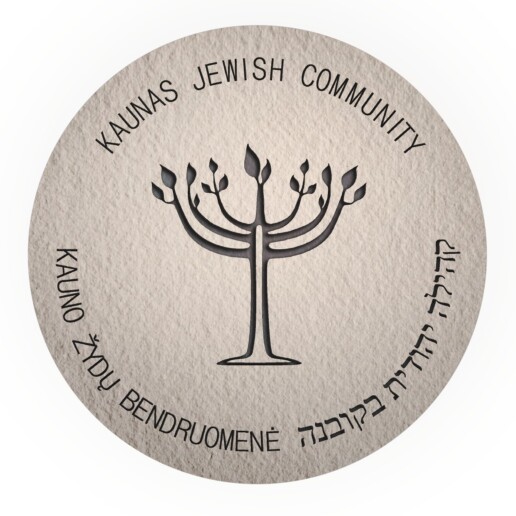About
29 – 30 September 2022, 9:00 – 17:00
Vytautas Magnus University Great Hall,
S. Daukanto str. 28, Kaunas
Registration: here
Kaunas – European Capital of Culture 2022 and the Memory Office programme invite everyone who cares about the city’s history, culture and the future of an open and democratic city to meet at the Litvak Culture Forum on 29-30 September. The Forum will take place over several days and will include discussions with renowned artists, scholars and representatives of the cultural world. We will ask questions: what does it mean to be Litvak today? How can art help us understand a complex history?
• What does it mean to be a Litvak today?
• How can art help us remember?
• What can we learn from history today?
• How can living memory teach us the universal values of respect and openness to others, empathy and love?
The Litvak Cultural Forum is part of the Kaunas 2022 CityTelling Festival organised by the Memory Office programme. Now in its fourth year, the CityTelling Festival opens up the forgotten pages of history.
This year, the CityTelling Festival will last several months. Starting in mid-July, we will awaken the Jewish memory of the city – we will talk about the rich culture that existed in the city, we will remember the forgotten names of Kaunas citizens and the fates of those who lived here. In October, we will look back at the stories of contemporary Kaunas, and end the festival with a reflection on the future at the International Symposium “The Idea of Europe”.
In a special cultural programme of the Litvak Forum, we are presenting “Kaunas Kantata”, composed by Philip Miller and Jenny Kagan, together with Lithuanian musicians – choirs, ensembles and soloists – which will remind us once again of the city’s complex history and the fate of its people. This encounter with history is more relevant than ever in today’s context.
A unique programme of academic presentations and presentations of artistic projects will be accompanied by concerts, exhibitions and performances dedicated to Jewish memory. Many of these art projects have been created by world’s Litvaks such as William Kentridge, Philip Miller, Jenny Kagan, Bruce Clarke and others. The discussions will also include the participation of prominent academics such as Prof. James E. Young, Prof. Antony Polonsky, Prof. Peter Salovey and others.
Litvak culture forum panelists:
Prof. Antony Polonsky
Antony Polonsky is Professor Emeritus at Brandeis University and Chief Historian of the Global Education Outreach Project of the POLIN Museum of the History of Polish Jews, Warsaw. His most recent work is The Jews in Poland and Russia volume 1, 1350 to 1881; volume 2 1881 to 1914; volume 3, 1914 to 2008 (Oxford, 2010, 2012), published in 2013 in an abridged version The Jews in Poland and Russia. A Short History (2014), which has been translated into French, Polish and Lithuanian. In 1999, he was awarded the Knight’s Cross of the Order of Merit of the Republic of Poland and the Officer’s Cross of the Order of Merit of Independent Lithuania. He holds honorary doctorates from the University of Warsaw (2010) and the Jagiellonian University (2014).
Prof. Antony Polonsky: My talk will be an investigation of the origin and character of the Litvak identity.
Bruce Clarke
Visual artist and photographer, Bruce Clarke was born in London in 1959 to South African parents. His maternal grandparents were from, Lithuania. He now lives in France.
Clarke’s work engages with contemporary history, the writing and transmission of this history, and hopes to stimulate thought on the contemporary world and its representations. His work is deeply anchored in a school of critical figuration. He was politically and artistically engaged in the struggle for change in South Africa during the period of apartheid and has been involved in the creation of memorial sites and artworks for the conservation of the memory of the victims of the genocide against Tutsis in Rwanda.
Bruce Clarke: Taking art out of the ghetto, assuming that different geographical situations are linked by the threads of history, I will talk about how each of my diverse personnel and political experiences nourishes my practice of art related to memory.
Daiva Čepauskaitė
Daiva Čepauskaitė - poet, playwright, publisher. Member of the Lithuanian Writers' Union since 1998. She writes poetry, plays, stagings, and librettos for children and adults. In 2017, she founded the publishing house "Žalias kalnas" in Kaunas, which publishes books for children. In 2011, Daiva Čepauskaitė was named Person of Tolerance of the Year by the Sugihara Foundation "Diplomats for Life" for her play "Pit (I've Forgotten You)". She works as a dramaturge at the National Kaunas Drama Theatre.
Chlebinskaitė and Čepauskaitė will tell us about the story behind the translation of Leah Goldberg's children's book "Rented Apartment" and the creation of the exclusive design.
Prof. James E. Young
James E. Young is a Distinguished University Professor of English and Judaic Studies Emeritus at the University of Massachusetts Amherst and the Founding Director of the Institute for Holocaust, Genocide, and Memory Studies at UMass Amherst. Professor Young is the author of Writing and Rewriting the Holocaust (Indiana University Press, 1988), The Texture of Memory (Yale University Press, 1993), which won the National Jewish Book Award in 1994, At Memory's Edge: After-images of the Holocaust in Contemporary Art and Architecture (Yale University Press, 2000), and The Stages of Memory: Reflections on Memorial Art, Loss, and the Spaces Between (University of Massachusetts Press, 2016), which won the National Council for Public History Book Award for 2017. He was also the Guest Curator of an exhibition at the Jewish Museum in New York City, entitled "The Art of Memory: Holocaust Memorials in History" (March - August 1994, with venues in Berlin and Munich, September 1994 - June 1995) and was the editor of The Art of Memory (Prestel Verlag, 1994), the exhibition catalogue for this show.
In 1997, Professor Young was appointed by the Berlin Senate to the five-member Findungskommission for Germany's national "Memorial to Europe's Murdered Jews," which selected Peter Eisenman’s design, finished and dedicated in May 2005. More recently, he was appointed to the jury for the “National 9/11 Memorial” design competition, won by Michael Arad and Peter Walker in 2004 and opened on September 11th, 2011.
Prof. James E. Young: In “History, Memory, and Monuments,” I will reflect on what we ask our monuments to do, how they succeed, and how they fail.
Jyll Bradley
Jyll Bradley is a UK-based artist working with sculpture, drawings, film, and text. She studied at Goldsmiths College, University of London, and has exhibited internationally for over 30 years. Jyll is interested in the idea of sculpture as a ‘gathering place' for people, stories, and ideas. She recently presented her sculpture project ‘Threshold’ - based on the Jewish ritual object the mezuzah – as part of Kaunas 2022 City Telling Festival.
Jyll Bradley: I will talk of sculpture as a gathering place. Gathering round the mezuzah – one of the smallest sculptures in the world.
Katharina von Schnurbein
Katharina von Schnurbein was appointed the first European Commission Coordinator on combating antisemitism and fostering Jewish life in December 2015. Her mandate includes liaising closely with Jewish communities, Member States, EU institutions, and international organizations as well as proposing and implementing policy to address antisemitism, foster Jewish life, and ensure Holocaust remembrance.
Prior, she worked for five years as part of the advisory team to European Commission President José Manuel Barroso, responsible for the dialogue with churches, religions, and non-confessional organizations as well as civil society organizations and think tanks in Germany. Katharina started working for the Commission in 2002, serving as the press officer for the EU Delegation in Prague. With enlargement in 2004, she moved to Brussels as spokesperson on employment, social affairs, and equal opportunities for the Czech EU Commissioner Vladimir Špidla.
Katharina received the B’nai B’rith Europe’s Human Rights Prize in 2018 and the Marietta and Friedrich Torberg medal of the Jewish Community in Vienna in 2021.
Faina Kukliansky
Prof. Leonidas Melnikas
Pianist, organist, musicologist, head of the department of the LMTA
Lina Šlipavičiūtė-Černiauskienė
Lina Šlipavičiūtė is an artist monumentalist whose work ranges from frescoes created in sacred spaces to street artworks exploring themes of memory and social exclusion.
The street art project "Walls Remember” not only decorates the walls of the Old Town of Vilnius but has also expanded to other Lithuanian cities.
Lina is interested in the possibilities of transformation of space: how a space/place with its history influences the work that appears there and vice versa – how the work can change the space and affect the person in it.
Marilia Destot
Marilia Destot is a French photographer, living and working in New York. Her photography explores the passage of time and the subjective and poetic process of memory. Her work is mainly rooted in her personal and familial history, is often developed in chapters, over time, places, or characters, and is linked to an intimate and contemplative experience of Life and Nature. Her practice uses the photo medium through a mix of visual or narrative experimentations, open forms where the subject reveals itself in fragments, echoes, and illusions, free to float and resonate with the viewer’s imagination and intimate world.
In 2018, begins her Journey, a poetic exploration of her family's Litvak roots, developed during a residency with the Kaunas Photography Gallery in 2019, and shown at the Emmanuel Levinas Center as part of the CityTelling Festival, Kaunas 2022.
Martynas Užpelkis
Heritage Expert of the Lithuanian Jewish (Litvak) Community
Michael Shubitz
Michael Shubitz was born in Israel. His parents survived the Holocaust in Lithuania. Both of them were from Lithuania. Both were Kaunasians.
Shubitz is a cameraman and photographer. In Kaunas, he is presenting his photography project "Back to Kaunas". He has captured the lives of 12 survivors from Kaunas. In his project he tries to draw a line between Jewish life in Kaunas before the war and now.
Michael Shubitz: In my presentation, I will talk about the ways of imagining the past, having no photos to tell the story. A phenomenon that is common for a whole generation.
Mindaugas Lukošaitis
M. Lukošaitis (born in 1980 in Šiauliai) is a sculptor, and draughtsman, and has been participating in exhibitions since 1997. He is perhaps most famous for his drawing cycles "Resistance" (or Resistance) and "Jews. My Story", which masterfully weave history and imagination. In both cycles, the artist's imagination creates reconstructions of possible situations, recreating traumatic moments of historical reality. The artist's works have been acquired by Lithuanian and international museums.
Mindaugas Lukošaitis: in the forum, I will talk about the reasons why memory is important to me as a creator.
Paulina Pukytė
Paulina Pukytė is an artist, writer, playwright, exhibition curator, and cultural critic. In 2017, she curated the 11th Kaunas Biennial There and Not There: (Im)possibility of a Monument in the public spaces of the city, dedicated to rethinking past, present, and future monuments in the paradigm of presence and absence. In the Forum she will present the aims, objectives, and results of this memorable project and talk about the relationship between the artist, the monument, and the viewer.
Paulina Pukytė: At the Forum I will present the 11th Kaunas Biennial There and Not There: (Im)possibility of a Monument. I will talk about the relationship between the artist, the monument, and the viewer.
Dr. Robert Kusek
Jagiellonian University Professor at the Department of Comparative Studies in Literature and Culture, Jagiellonian University in Kraków. His research interests include life writing genres (particularly memoirs), transnationalism, dissonant heritage, as well as a comparative approach to literary studies. He is the author of two monographs and several dozen articles published in books, academic journals, and magazines, as well as co-editor of fourteen volumes of articles. He was a researcher in several Polish and international projects – currently he is a principal investigator in the National Science Centre funded project entitled “(Un)accidental Tourists: Polish Literature and Visual Culture in South Africa in the 20th and 21st Centuries.”
Dr. Kusek and Dr.Wojciech Szymański: This presentation aims to discuss various acts and strategies of addressing Lithuanian and, largely, Central European heritage in selected works of South African writers and artists: William Kentridge, as well as the likes of Nadine Gordimer, Dan Jacobson, and Rose Zwi. We will try to identify what kind of influence Central Europe – and specifically Lithuania – have exerted on South African cultural production and how the above-mentioned artists have responded to its often burdensome memory.
Dr. Ruth Reches
Director of the Vilnius Sholom Aleichem ORT Gymnasium
Prof. Peter Salovey
Peter Salovey is the twenty-third president of Yale University and the Chris Argyris Professor of Psychology. Since becoming president in July 2013, he has led the development of new programs and facilities, strengthened partnerships worldwide, increased access to a Yale College education, and enhanced interdisciplinary collaboration and entrepreneurial opportunity for faculty and students. His prior leadership roles at Yale include serving as chair of the Department of Psychology, dean of the Graduate School of Arts and Sciences, dean of Yale College, and provost.
After completing his undergraduate education at Stanford University, he earned a Ph.D. (psychology) at Yale in 1986 and then was appointed to the faculty. He has authored or edited over a dozen books translated into eleven languages and published hundreds of journal articles and essays in social psychology. He has studied the connections among health beliefs, health communication, and health behavior, especially those relevant to the prevention of cancer and HIV/AIDS. He also conducted research on the psychological significance and function of human moods and emotions. With John D. Mayer, he developed a broad framework called “emotional intelligence.” In addition to teaching and mentoring scores of graduate students, President Salovey has won both the William Clyde DeVane Medal for Distinguished Scholarship and Teaching in Yale College and the Lex Hixon ’63 Prize for Teaching Excellence in the social sciences. He is a member of the American Academy of Arts & Sciences and the National Academy of Medicine.
Prof. Peter Salovey: Through my ancestry and understanding of the historical approach to the Jewish practice of those with roots in Lithuania, I reflect on the multidimensional nature of Litvak identity.
Simas Levinas
Chairman of Vilnius Jewish Religious Community
Sigutė Chlebinskaitė
Sigutė Chlebinskaitė writes books, and curates exhibitions dedicated to book culture and the accompanying education. In 2002, she founded the volunteer community "Book Country". She has won awards in book art competitions in Lithuania and the Baltic States, the USA, France, Great Britain, and Japan, and was awarded the Culture and Art Prize of the Government of the Republic of Lithuania (2017). She has written books by Icchok Rudaševski, Matilda Olkinaitė, Avram Suckever, Moishe Vorobeitchik-Moï Ver, Beba Epstein, Moishe Kulbak, Moishe Kulbak, and Liya Goldberg, and has tried to speak anew about the destroyed world of the Litvaks and their talents and their manuscript legacy.
Chlebinskaitė and Čepauskaitė will tell us about the story behind the translation of Leah Goldberg's children's book "Rented Apartment" and the creation of the exclusive design.
Prof. Tsvia Walden
Prof. Tsvia Walden from Ben Gurion University of the Negev, Israel, is a psycholinguist and a software and T.V. program designer, consultant, and presenter of TV series about the Hebrew Language, author of numerous publications on its renewal as a mother tongue.
Prof. Tsvia Walden: I will discuss the enormous contribution of Litvaks to modern Hebrew. I will raise questions: How many homelands may a person have? How many mother tongues may he speak? And in case this person is a Litvak – is it still the same answer?
Viktorija Sideraitė Alon
Architect, member of the Lithuanian Jewish Community, member of the creative group JUDVI&AŠ
Dr. Wojciech Szymański
Art historian and art critic, independent curator. Assistant professor at the Institute of Art History, University of Warsaw, author of several dozen articles, editor and author of monographs and exhibition catalogs, principal investigator and researcher in several Polish and international scientific projects; since 2019 he has been editor-in-chief of “Ikonotheka” journal. Currently, he is a co-curator of Małgorzata Mirga-Tas’s exhibition Re-enchanting the World in the Polish Pavilion at the 59th Biennale Arte in Venice. He is a member of the International Association of Art Critics (AICA). He lives in Krakow.
Dr. Kusek and Dr.Wojciech Szymański: This presentation aims to discuss various acts and strategies of addressing Lithuanian and, largely, Central European heritage in selected works of South African writers and artists: William Kentridge, as well as the likes of Nadine Gordimer, Dan Jacobson, and Rose Zwi. We will try to identify what kind of influence Central Europe – _and specifically Lithuania – _have exerted on South African cultural production and how the above-mentioned artists have responded to its often burdensome memory.
Donatas Puslys
Host of the LRT Klasika radio program "Small Europe Talks", Head of the Media and Democracy Programme at the Vilnius Institute for Policy Analysis, teacher of ethics at the Queen Martha School, and alumnus of the "I Choose to Teach" program. He is a passionate researcher of Lithuania's multicultural past and was named the 2014 Person of the Year for Tolerance for promoting dialogue between different cultures and religions. A man who will always be grateful to the brilliant Litvak writer Grigory Kanovich for showing us the cloud called Lithuania.
Donatas Puslys will moderate a discussion with authors of Lithuanian books - Sigute Chlebinskaite, Daiva Čepauskaite, and Aneta Anra.
Aneta Anra
Aneta Anra is a novelist and playwright. She is the author of three novels: Niki: dvigubas portretas (Niki: A Double Portrait), published by Tyto Alba in 2019; Paleistuvės, arba Meilė pagal Niurnbergo mergelę (Iron Maidens, or Love According to the Virgin of Nuremberg) published by Kitos knygos in 2016, with illustrations by Jolanta Kyzikaitė; and Katinas Temzėje (The Cat in the Thames), published by Versus Aureus in 2008; the plays Niurnbergo mergelė (The Virgin of Nuremberg; 2013, Naujoji Romuva, No. 3), Katinas Temzėje (The Cat in the Thames) and Bestija žydrom akim (The Beast with Blue Eyes); and the documentary novel Jehudit. Pasaulis galėtų būti toks gražus (Jehudit. How Beautiful the World Could Be, released in Lithuanian by Odilė publishers in 2021). Her plays Katinas Temzėje and Bestija žydrom akim were staged at the State Youth Theatre (Vilnius) in 2008 and 2010, respectively.
Her book "Jehudit: How Beautiful the World Could Be" was awarded the Grigory Kanovich Republican Prize and is currently being translated into English, Polish and French.
Prof. Violeta Davoliūtė
Prof. Violeta Davoliūtė, VU TSPMI researcher on the politics of memory in East Central Europe.
Prof. Violeta Davoliūtė will moderate a discussion on the role of art in understanding complex history.
Dr. Daiva Price
Daiva (Citvarienė) Price - art curator, researcher, and cultural producer. She is also a lecturer at the Faculty of Arts of Vytautas Magnus University, with an interest in memory and museum studies. Dr. Price is the creator of several memory projects: the collective memory project "Sites of Memory" (www.atmintiesvietos.lt), the audio guide to historical Kaunas "Spirit Guide to the Old Kaunas" and many others.
Since 2014, Dr. Price has been one of the members of the creative team preparing the Kaunas European Capital of Culture 2022 bid and since 2017 she has been working for the Kaunas 2022 team. She was Curator of the Audience Development Programme for Cultural Operators 2017 - 2019. The main program she curates for Kaunas 2022 is Memory Office, which aims to break down the city's stereotypes, stimulate a conscious interest in the city's complex history, and awaken the city's multiethnic memory.
Dr. Daiva Price: The path of the Memory Office began in 2017. What has changed in these five years? What memories have been awakened by the Memory Office?
Litvak culture forum programme:
SEPTEMBER 29, THURSDAY
WHAT DOES IT MEAN TO BE LITVAK?
Prime Minister of the Republic of Lithuania Ingrida Šimonytė
Ambassador of the State of Israel Hadas Wittenberg Silverstein
President of the Lithuanian Jewish (Litvak) Community Faina Kukliansky
Kaunas 2022 CEO Dr. Virginija Vitkienė
Curator of the Kaunas 2022 programme “Memory Office” Dr. Daiva Price
Composer Šenderovas said about this work: “Almost 30 years ago, when I was in Jerusalem for the first time, in the Hadassah Medical Centre, in the special hall (synagogue), I saw unusually bright colours on the floor. It was a reflection of Marc Chagall’s twelve stained-glass windows mounted high up on the ceiling. They were full of symbols – triangles and circles, imprints of birds, fish, beasts, menorahs and Hebrew letters. A kind of Babylon. However, Shagal’s main source of inspiration is the Bible and his own experience. The image kept changing as the sun set. My work is also full of symbols – the clarinet recalls the former Jewish life in Europe, the percussion and the string quartet are like an allusion to the Biblical world.”
Šenderovas’ work will be performed by the Chordos String Quartet, clarinetist Algirdas Žiūra and percussionist Arkadijus Gotesmanas. Šenderovas and Gotesmanas have a long personal creative friendship: especially for this work, Gotesmanas has made a stand that can hold the sounding pieces of stained glass. Author of the project A.Gotesmanas.
Katharina von Schnurbein
European Commission Coordinator on combating antisemitism and fostering Jewish life
Katharina von Schnurbein was appointed the first European Commission Coordinator on combating antisemitism and fostering Jewish life in December 2015. Her mandate includes liaising closely with Jewish communities, Member States, EU institutions, and international organizations as well as proposing and implementing policy to address antisemitism, foster Jewish life, and ensure Holocaust remembrance.
Prior, she worked for five years as part of the advisory team to European Commission President José Manuel Barroso, responsible for the dialogue with churches, religions, and non-confessional organizations as well as civil society organizations and think tanks in Germany. Katharina started working for the Commission in 2002, serving as the press officer for the EU Delegation in Prague. With enlargement in 2004, she moved to Brussels as spokesperson on employment, social affairs, and equal opportunities for the Czech EU Commissioner Vladimir Špidla.
Katharina received the B’nai B’rith Europe’s Human Rights Prize in 2018 and the Marietta and Friedrich Torberg medal of the Jewish Community in Vienna in 2021.
Prof. Antony Polonsky (RSA/UK)
Antony Polonsky is Professor Emeritus at Brandeis University and Chief Historian of the Global Education Outreach Project of the POLIN Museum of the History of Polish Jews, Warsaw. His most recent work is The Jews in Poland and Russia volume 1, 1350 to 1881; volume 2 1881 to 1914; volume 3, 1914 to 2008 (Oxford, 2010, 2012), published in 2013 in an abridged version The Jews in Poland and Russia. A Short History (2014), which has been translated into French, Polish and Lithuanian. In 1999, he was awarded the Knight’s Cross of the Order of Merit of the Republic of Poland and the Officer’s Cross of the Order of Merit of Independent Lithuania. He holds honorary doctorates from the University of Warsaw (2010) and the Jagiellonian University (2014).
Prof. Antony Polonsky: My talk will be an investigation of the origin and character of the Litvak identity.
Prof. Peter Salovey (US)
Peter Salovey is the twenty-third president of Yale University and the Chris Argyris Professor of Psychology. Since becoming president in July 2013, he has led the development of new programs and facilities, strengthened partnerships worldwide, increased access to a Yale College education, and enhanced interdisciplinary collaboration and entrepreneurial opportunity for faculty and students. His prior leadership roles at Yale include serving as chair of the Department of Psychology, dean of the Graduate School of Arts and Sciences, dean of Yale College, and provost.
After completing his undergraduate education at Stanford University, he earned a Ph.D. (psychology) at Yale in 1986 and then was appointed to the faculty. He has authored or edited over a dozen books translated into eleven languages and published hundreds of journal articles and essays in social psychology. He has studied the connections among health beliefs, health communication, and health behavior, especially those relevant to the prevention of cancer and HIV/AIDS. He also conducted research on the psychological significance and function of human moods and emotions. With John D. Mayer, he developed a broad framework called “emotional intelligence.” In addition to teaching and mentoring scores of graduate students, President Salovey has won both the William Clyde DeVane Medal for Distinguished Scholarship and Teaching in Yale College and the Lex Hixon ’63 Prize for Teaching Excellence in the social sciences. He is a member of the American Academy of Arts & Sciences and the National Academy of Medicine.
Prof. Peter Salovey: Through my ancestry and understanding of the historical approach to the Jewish practice of those with roots in Lithuania, I reflect on the multidimensional nature of Litvak identity.
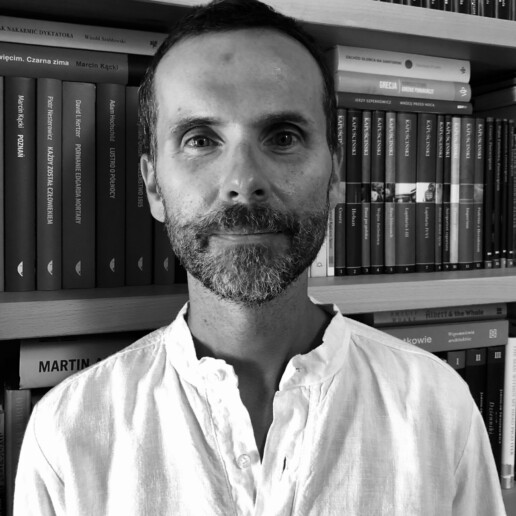
Prof. Robert Kusek (PL)
Jagiellonian University Professor at the Department of Comparative Studies in Literature and Culture, Jagiellonian University in Kraków. His research interests include life writing genres (particularly memoirs), transnationalism, dissonant heritage, as well as a comparative approach to literary studies. He is the author of two monographs and several dozen articles published in books, academic journals, and magazines, as well as co-editor of fourteen volumes of articles. He was a researcher in several Polish and international projects – currently he is a principal investigator in the National Science Centre funded project entitled “(Un)accidental Tourists: Polish Literature and Visual Culture in South Africa in the 20th and 21st Centuries.”
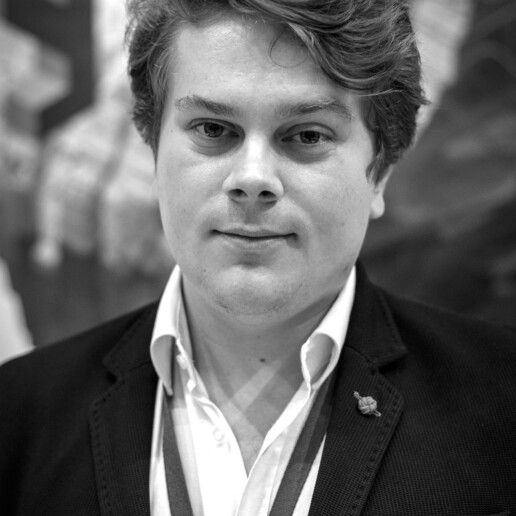
Dr. Wojciech Szymański (PL)
Art historian and art critic, independent curator. Assistant professor at the Institute of Art History, University of Warsaw, author of several dozen articles, editor and author of monographs and exhibition catalogs, principal investigator and researcher in several Polish and international scientific projects; since 2019 he has been editor-in-chief of “Ikonotheka” journal. Currently, he is a co-curator of Małgorzata Mirga-Tas’s exhibition Re-enchanting the World in the Polish Pavilion at the 59th Biennale Arte in Venice. He is a member of the International Association of Art Critics (AICA). He lives in Krakow.
Dr. Kusek and Dr.Wojciech Szymański: This presentation aims to discuss various acts and strategies of addressing Lithuanian and, largely, Central European heritage in selected works of South African writers and artists: William Kentridge, as well as the likes of Nadine Gordimer, Dan Jacobson, and Rose Zwi. We will try to identify what kind of influence Central Europe – _and specifically Lithuania – _have exerted on South African cultural production and how the above-mentioned artists have responded to its often burdensome memory.
Prof. Tsvia Walden (IL)
Prof. Tsvia Walden from Ben Gurion University of the Negev, Israel, is a psycholinguist and a software and T.V. program designer, consultant, and presenter of TV series about the Hebrew Language, author of numerous publications on its renewal as a mother tongue.
Prof. Tsvia Walden: I will discuss the enormous contribution of Litvaks to modern Hebrew. I will raise questions: How many homelands may a person have? How many mother tongues may he speak? And in case this person is a Litvak – is it still the same answer?
Artist Marilia Destot (USA).
Marilia Destot is a French photographer, living and working in New York. Her photography explores the passage of time and the subjective and poetic process of memory. Her work is mainly rooted in her personal and familial history, is often developed in chapters, over time, places, or characters, and is linked to an intimate and contemplative experience of Life and Nature. Her practice uses the photo medium through a mix of visual or narrative experimentations, open forms where the subject reveals itself in fragments, echoes, and illusions, free to float and resonate with the viewer’s imagination and intimate world.
In 2018, begins her Journey, a poetic exploration of her family’s Litvak roots, developed during a residency with the Kaunas Photography Gallery in 2019, and shown at the Emmanuel Levinas Center as part of the CityTelling Festival, Kaunas 2022.
The discussion is organized by the Lithuanian Jewish (Litvak) Community
Participants:
Martynas Užpelkis – heritage Expert of the Lithuanian Jewish (Litvak) Community
Viktorija Sideraitė Alon – architect, member of the Lithuanian Jewish Community, member of the creative group JUDVI&AŠ
Simas Levinas – chairman of Vilnius Jewish Religious Community
Dr. Ruth Reches – director of the Vilnius Sholom Aleichem ORT Gymnasium
Prof. Leonidas Melnikas – pianist, organist, musicologist, head of the department of the LMTA
Pianist A. Paley has been interested in klezmer music for many years. This is the music which was played at weddings and festivals. Over time, it developed into a separate genre of music. Although it seems simple, this music is not easy to play, and improvisation is very important. The musicians will remind us of the life of the Jews of Vilnius, which is no longer…
Authors of the exhibition Roza Litay, Lia Shiboleth and Dr Carol Hoffman (IL). Organised by the Vilnius Gaon Museum of Jewish History.
Moderator:
Prof. A. Polonsky (RSA/UK) – Professor Emeritus at Brandeis University, author of numerous monographs
Panelists:
Prof. Peter Salovey (US) – president and Chris Argyris Professor of Psychology, Yale University
Prof. Robert Kusek (PL) – Jagiellonian University Professor
Prof. Tsvia Walden (IL) – psycholinguist, Professor at Ben-Gurion University of the Negev
Faina Kukliansky (LT) – chairwoman of Lithuanian Jewish (Litvak) Community
SEPTEMBER 30, FRIDAY
ART HELPS TO UNDERSTAND HISTORY, ART HELPS TO REMEMBER
Prof. James E. Young (US)
James E. Young is a Distinguished University Professor of English and Judaic Studies Emeritus at the University of Massachusetts Amherst and the Founding Director of the Institute for Holocaust, Genocide, and Memory Studies at UMass Amherst. Professor Young is the author of Writing and Rewriting the Holocaust (Indiana University Press, 1988), The Texture of Memory (Yale University Press, 1993), which won the National Jewish Book Award in 1994, At Memory’s Edge: After-images of the Holocaust in Contemporary Art and Architecture (Yale University Press, 2000), and The Stages of Memory: Reflections on Memorial Art, Loss, and the Spaces Between (University of Massachusetts Press, 2016), which won the National Council for Public History Book Award for 2017. He was also the Guest Curator of an exhibition at the Jewish Museum in New York City, entitled “The Art of Memory: Holocaust Memorials in History” (March – August 1994, with venues in Berlin and Munich, September 1994 – June 1995) and was the editor of The Art of Memory (Prestel Verlag, 1994), the exhibition catalogue for this show.
In 1997, Professor Young was appointed by the Berlin Senate to the five-member Findungskommission for Germany’s national “Memorial to Europe’s Murdered Jews,” which selected Peter Eisenman’s design, finished and dedicated in May 2005. More recently, he was appointed to the jury for the “National 9/11 Memorial” design competition, won by Michael Arad and Peter Walker in 2004 and opened on September 11th, 2011.
Prof. James E. Young: In “History, Memory, and Monuments,” I will reflect on what we ask our monuments to do, how they succeed, and how they fail.
Michael Shubitz (IL)
Michael Shubitz was born in Israel. His parents survived the Holocaust in Lithuania. Both of them were from Lithuania. Both were Kaunasians.
Shubitz is a cameraman and photographer. In Kaunas, he is presenting his photography project “Back to Kaunas”. He has captured the lives of 12 survivors from Kaunas. In his project he tries to draw a line between Jewish life in Kaunas before the war and now.
Michael Shubitz: In my presentation, I will talk about the ways of imagining the past, having no photos to tell the story. A phenomenon that is common for a whole generation.
Bruce Clarke (FR)
Visual artist and photographer, Bruce Clarke was born in London in 1959 to South African parents. His maternal grandparents were from, Lithuania. He now lives in France.
Clarke’s work engages with contemporary history, the writing and transmission of this history, and hopes to stimulate thought on the contemporary world and its representations. His work is deeply anchored in a school of critical figuration. He was politically and artistically engaged in the struggle for change in South Africa during the period of apartheid and has been involved in the creation of memorial sites and artworks for the conservation of the memory of the victims of the genocide against Tutsis in Rwanda.
Bruce Clarke: Taking art out of the ghetto, assuming that different geographical situations are linked by the threads of history, I will talk about how each of my diverse personnel and political experiences nourishes my practice of art related to memory.
Jyll Bradley (UK)
Jyll Bradley is a UK-based artist working with sculpture, drawings, film, and text. She studied at Goldsmiths College, University of London, and has exhibited internationally for over 30 years. Jyll is interested in the idea of sculpture as a ‘gathering place’ for people, stories, and ideas. She recently presented her sculpture project ‘Threshold’ – based on the Jewish ritual object the mezuzah – as part of Kaunas 2022 City Telling Festival.
Jyll Bradley: I will talk of sculpture as a gathering place. Gathering round the mezuzah – one of the smallest sculptures in the world.
Paulina Pukytė (LT/UK)
Paulina Pukytė is an artist, writer, playwright, exhibition curator, and cultural critic. In 2017, she curated the 11th Kaunas Biennial There and Not There: (Im)possibility of a Monument in the public spaces of the city, dedicated to rethinking past, present, and future monuments in the paradigm of presence and absence. In the Forum she will present the aims, objectives, and results of this memorable project and talk about the relationship between the artist, the monument, and the viewer.
Paulina Pukytė: At the Forum I will present the 11th Kaunas Biennial There and Not There: (Im)possibility of a Monument. I will talk about the relationship between the artist, the monument, and the viewer.
Dr. Daiva Price (LT)
Daiva (Citvarienė) Price – art curator, researcher, and cultural producer. She is also a lecturer at the Faculty of Arts of Vytautas Magnus University, with an interest in memory and museum studies. Dr. Price is the creator of several memory projects: the collective memory project “Sites of Memory” (www.atmintiesvietos.lt), the audio guide to historical Kaunas “Spirit Guide to the Old Kaunas” and many others.
Since 2014, Dr. Price has been one of the members of the creative team preparing the Kaunas European Capital of Culture 2022 bid and since 2017 she has been working for the Kaunas 2022 team. She was Curator of the Audience Development Programme for Cultural Operators 2017 – 2019. The main program she curates for Kaunas 2022 is Memory Office, which aims to break down the city’s stereotypes, stimulate a conscious interest in the city’s complex history, and awaken the city’s multiethnic memory.
Dr. Daiva Price: The path of the Memory Office began in 2017. What has changed in these five years? What memories have been awakened by the Memory Office?
Moderator:
Prof. Violeta Davoliūtė (LT) – VU TSPMI researcher on the politics of memory in East Central Europe
Panelists:
Paulina Pukytė (LT/JK) – artist, writer, art curator
Bruce Clarke (FR) – artist, author of the ECCE HOMO project in Kaunas IX Fort
Dr. Daiva Price – art historian, curator of Kaunas 2022 programme “Memory Office”
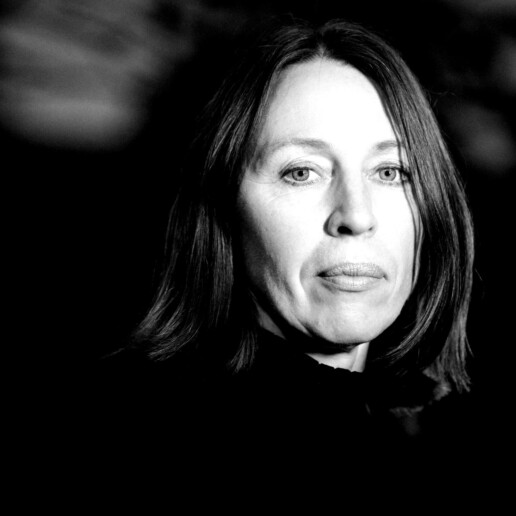
Writer, publisher Daiva Čepauskaitė (LT)
Daiva Čepauskaitė – poet, playwright, publisher. Member of the Lithuanian Writers’ Union since 1998. She writes poetry, plays, stagings, and librettos for children and adults. In 2017, she founded the publishing house “Žalias kalnas” in Kaunas, which publishes books for children. In 2011, Daiva Čepauskaitė was named Person of Tolerance of the Year by the Sugihara Foundation “Diplomats for Life” for her play “Pit (I’ve Forgotten You)”. She works as a dramaturge at the National Kaunas Drama Theatre.

Artist Sigutė Chlebinskaitė (LT)
Sigutė Chlebinskaitė writes books, and curates exhibitions dedicated to book culture and the accompanying education. In 2002, she founded the volunteer community “Book Country”. She has won awards in book art competitions in Lithuania and the Baltic States, the USA, France, Great Britain, and Japan, and was awarded the Culture and Art Prize of the Government of the Republic of Lithuania (2017). She has written books by Icchok Rudaševski, Matilda Olkinaitė, Avram Suckever, Moishe Vorobeitchik-Moï Ver, Beba Epstein, Moishe Kulbak, Moishe Kulbak, and Liya Goldberg, and has tried to speak anew about the destroyed world of the Litvaks and their talents and their manuscript legacy.
Chlebinskaitė and Čepauskaitė will tell us about the story behind the translation of Leah Goldberg’s children’s book “Rented Apartment” and the creation of the exclusive design.
Artist Mindaugas Lukošaitis (LT)
M. Lukošaitis (born in 1980 in Šiauliai) is a sculptor, and draughtsman, and has been participating in exhibitions since 1997. He is perhaps most famous for his drawing cycles “Resistance” (or Resistance) and “Jews. My Story”, which masterfully weave history and imagination. In both cycles, the artist’s imagination creates reconstructions of possible situations, recreating traumatic moments of historical reality. The artist’s works have been acquired by Lithuanian and international museums.
Mindaugas Lukošaitis: in the forum, I will talk about the reasons why memory is important to me as a creator.
Artist Lina Šlipavičiūtė-Černiauskienė (LT)
Lina Šlipavičiūtė is an artist monumentalist whose work ranges from frescoes created in sacred spaces to street artworks exploring themes of memory and social exclusion.
The street art project “Walls Remember” not only decorates the walls of the Old Town of Vilnius but has also expanded to other Lithuanian cities.
Lina is interested in the possibilities of transformation of space: how a space/place with its history influences the work that appears there and vice versa – how the work can change the space and affect the person in it.
Writer Aneta Anra (LT)
Aneta Anra is a novelist and playwright. She is the author of three novels: Niki: dvigubas portretas (Niki: A Double Portrait), published by Tyto Alba in 2019; Paleistuvės, arba Meilė pagal Niurnbergo mergelę (Iron Maidens, or Love According to the Virgin of Nuremberg) published by Kitos knygos in 2016, with illustrations by Jolanta Kyzikaitė; and Katinas Temzėje (The Cat in the Thames), published by Versus Aureus in 2008; the plays Niurnbergo mergelė (The Virgin of Nuremberg; 2013, Naujoji Romuva, No. 3), Katinas Temzėje (The Cat in the Thames) and Bestija žydrom akim (The Beast with Blue Eyes); and the documentary novel Jehudit. Pasaulis galėtų būti toks gražus (Jehudit. How Beautiful the World Could Be, released in Lithuanian by Odilė publishers in 2021). Her plays Katinas Temzėje and Bestija žydrom akim were staged at the State Youth Theatre (Vilnius) in 2008 and 2010, respectively.
Her book “Jehudit: How Beautiful the World Could Be” was awarded the Grigory Kanovich Republican Prize and is currently being translated into English, Polish and French.
Moderator:
Donatas Puslys (LT) – publicist
Panelists:
Daiva Čepauskaitė (LT) – the publisher of the book, writer
Sigutė Chlebinskaitė (LT) – the artist of the book “Rented Apartment”
Aneta Anra (LT) – the writer, author of the book “Jehudit: How Beautiful the World Could Be”
Prof. Antony Polonsky, Prof. Šarūnas Liekis and Dr. Daiva Price
Litvak culture forum following programme:
until 10 05 Mausha Levi and Shimon Bajer. The legacy of interwar photographers
2022 07 28 - 2023 10 05
Mausha Levi and Shimon Bajer. The legacy of interwar photographers
2022 July 28 at the Maironis Museum of Lithuanian Literature we will invite you to the exhibition of Lithuanian interwar photographers "Mausha Levi and Shimon Bajer. The Legacy of Interwar Photographers", which will enrich program of the Kaunas 2022. The photo studio "Baer ir Levi" was founded in Ukmergė around 1918. It is symbolic that the opening of the studio coincided with the proclamation of Independent Lithuania. Shimon Bajer was one of the first and best known owners of a photography studio in Kaunas after the First World War, his studio "Š. Bajer fotografija" was located at Laisvės al. Shimon Bajer organized the first Lithuanian Society of Commercial Photographers, which met in his studio.
Mausha Levi, according to family legend, gained some experience at a photo studio in New York. About 1923 became the sole owner of the Bajer and Levi photo studio and changed its name to "M. Levi fotografija". Over the years, Mausha Levi in Ukmergė and Shimon Bajer in Kaunas created a photo gallery depicting members of the Seimas and peasants, the army and clergy, students and ordinary citizens, famous foreign visitors, writers, artists, modern architecture and everyday street life. The organizer of the exhibition is Faina Borovsky, granddaughter of M. Levi and niece of S. Bajer, who originated in Šiauliai and currently live in New York.
The photographs reflect the Lithuanian interwar period, capture the bright personalities of that time, and characteristic details. The works are scattered very widely and are discovered even in New York museums, so today the most important thing is to rediscover them, collect them and take care that no one is left forgotten. At that time, the profession of a photographer was complex and multifaceted. Faina Borovsky is convinced: "It was not enough to just take photos - you had to be a chemist, an illuminator, an artist, draw decorations, print photos. It had to be a universal man - a master," Photographs in the archives are selected according to the stamps belonging to the photo studio. All the images found raise many questions, so it is especially important to know what is depicted in the discovered photos. The exhibition features many interesting photographs, the context of which has been deciphered by people interested in history and remembering the interwar period. They aim to show what the cultural life of Lithuania and Jews was like, to remember the experience of the Holocaust.
FB event
Registration
from 09 23 Ecco homo: for those who stayed and those who left
2022 09 23 - 2023 09 01
Ecco homo: for those who stayed and those who left
A visual art and contemporary dance project at Fort IX, in collaboration with the National Resistance Museum of Luxembourg. Visitors will be invited to explore the tragic history of the Second World War in order to better understand our present. The project will be a collaboration between artist Bruce Clarke (FR) and choreographer Tebby W.T. Ramasike (NL).
When? Presentation and dance performance 23-24 September 2022
The installation will run until 01 September 2023
Where? Kaunas IX Fort Museum, Žemaičių pl. 73
09 28 Concert-story “The Music Shell”
09 28
Concert-story "The Music Shell"
In this unconventional concert-story by the international artists' group Chromatikon, the audience will hear original music inspired by Jewish folk songs, ritual music and professional music. The music will be accompanied by visual narratives.
When? 28 September 2022
Where? LSMU Emanuel Levinas Centre, V. Putvinskio str. 14
09 28-11 13 Dorothy Bohm's exhibition at Kaunas Photography Gallery
09 28-11 13
Dorothy Bohm's exhibition at Kaunas Photography Gallery
On September 28 at 6 p.m. Dorothy Bohm’s exhibition will open at Kaunas Photography Gallery where it will be on display until November 13. Monica Bohm, the curator of the exhibition and the artist’s daughter, will be present at the opening of the exhibition.
A comprehensive retrospective of the renowned British artist of Litvak origin invites visitors to explore the artists who’s impressive career spans more than six decades and several continents. The exhibition features black and white and colour images illustrating the different phases of the Dorothy Bohm’s career and inviting to discover a wide array of aesthetically striking and deeply humane works that document people and landscapes in a rapidly changing world.
According to exhibition curator Monica Bohm, ‘While the human figure in its natural setting remained the primary focus of Dorothy Bohm’s work, and she still used photography in its purest, un-manipulated form, her approach became more painterly and allusive, with an increasing interest in spatial and other forms of ambiguity.’ Dorothy Bohm’s retrospective at the Kaunas Photography Gallery will offer a glimpse of this transformation and into different elements of the photographer’s creative biography.
Dorothy Bohm (born 1924) spent her childhood in Memel (now Klaipėda), where she enjoyed a relatively carefree childhood. When Lithuania was occupied by the Nazis in 1939, the Dorothy’s parents decided to send her to the UK. There, Dorothy graduated in photography and began to practice portrait photography, establishing her own photography studio. Eventually, she abandoned studio photography after becoming interested in street photography. After a long period of shooting mainly black and white images, she used Kodak colour film for the first time, and thereafter abandoned black and white entirely. Although she stopped taking pictures a few years ago, Dorothy Bohm’s passionate engagement with her photography continues unabated. With some twenty-five solo exhibitions and over fifteen publications to her name, she is widely acknowledged as a doyenne of British photography.
Curated by Monica Bohm.
The exhibition will run until November 13.
The exhibition is supported by Lithuanian Council for Culture.
09 28 - 10 30 Photography exhibition “Back to Kaunas”
2022 09 28 - 10 30
Photography exhibition "Back to Kaunas"
A photography exhibition of the last Litvaks of Kaunas by Litvak Michael Schubitz (parents born in Kaunas). Many of the people captured in the photographs went through the hell of the Holocaust. Some of them left Kaunas for Palestine before the World War II. "I want to bring them back to the Kaunas they left so many years ago," says the author.
When? Opening on 28 September 2022. Open until 30 October 2022.
Where? Vytautas Magnus University Central Hall, S. Daukanto str. 28, 2nd floor
09 29 Exhibition “Lithuanians in the Streets of Israel”
2022 09 29
Exhibition "Lithuanians in the Streets of Israel"
This exhibition is an invitation to take a walk on a symbolic street in Israel, an amalgam of various streets of the cities of Israel named after prominent Litvaks – spiritual and cultural leaders of the Jewish communities in the present and historical territory of Lithuania, visionaries of the ethnic Jewish state or world-famous scientists and artists. It is also significant that independent Lithuania has realised the importance of these persons to the history and culture of the country; some of these persons have become part of the public culture of remembrance with streets in Vilnius (Gaon, Antokolskio streets) and Kaunas (Mapu, Zamenhofo streets) bearing their names.
The initial version of this exhibition was displayed at Beit Hatfutsot: Museum of the Jewish People in Tel Aviv in October 2015 during the visit of President Dalia Grybauskaitė of Lithuania to Israel. Lithuania cele- brates the 100th anniversary of the restoration of statehood this year and the State of Israel celebrates its 70th anniversary, so the exhibition in Vilnius has been supplemented by focusing on figures important to the statehood (Simon Rozenbaum – the interwar Lithuanian diplomat and Consul General in Tel Aviv), culture (Lea Goldberg – a famous Israeli writer, who has translated many Lithuanian folk songs into the Hebrew language), etc. of both countries. The lines from the poem by Goldberg accurately depict the relationship of Litvaks with Lithuania – often contradictory, but always painfully nostalgic. These lines were read out during the ceremony commemorating the 70th anniversary of the State of Israel in Jerusalem:
My homeland – land of beauty and poverty
The queen has no home, the king has no crown.
There are seven spring days in the year
And cold and rain all the rest.
The authors of the exhibition are Litvaks living in Israel– photographer Roza Litay with her granddaughter Lia and Dr Carol Hoffman. They immortalised the streets of various cities in Israel, predominantly the streets of Tel Aviv, which have become a symbol of the start of a new life of the Jews in Israel. As Roza Litay said, ‘Tel Aviv is like a physical symbol of the return of the Jews to Israel. Jerusalem is our internal world, our spirit and sanctity and Tel Aviv is our daily life.’ A street name is an important part of the pulsating daily life, chiefly related to the search for a specific address. The memorial and state ideology message sent by the street name in daily life is not normally visible (it becomes apparent during coups and turmoil when monuments are pulled down and streets or squares, etc. are renamed). The main idea behind the exhibition was to draw the eyes of the rushing passer-by to the plate with the street name and thus to capture not only practical information, but also the symbolic memorial message. The message communicated by the street name has its own meanings for the authors of the idea – one meaning for Roza who was born in Lithuania, and a different meaning for Carol, who was born in the US, and is preoccupied with its genealogy and the commemoration of her forefathers in Lithuania, and yet another meaning for Lia Litay, a student born in Israel, who first learned about Lithuania and Litvaks from her grandmother. Therefore, the brief information provided next to the photographs of the names of the streets is just a hint at the biographies of those extremely devout persons, whose contributions to Lithuanian and world culture you will become acquainted with at the Museum of Litvak Culture and Identity due to be opened in Vilnius in the next few years.
Aušra Rožankevičiūtė
Authors of the exhibition Roza Litay, Lia Shiboleth and Dr Carol Hoffman (IL). Organised by the Vilnius Gaon Museum of Jewish History.
09 29 Concert. Anatoly Shenderov's “After Shagal”
2022 09 29
Concert. Anatoly Shenderov's "After Shagal"
The composer Anatoly Shenderov said of this work: "Almost 30 years ago, when I was in Jerusalem for the first time, in the special hall (synagogue) of the Hadassah Medical Centre, I saw extremely bright colours on the floor. It was a reflection of Marc Chagall's twelve stained-glass windows mounted high up on the ceiling. They were full of symbols - triangles and circles, imprints of birds, fish, beasts, menorahs and Hebrew letters. A kind of Babylon. However, Shagal's main source of inspiration is the Bible and his own experience. The image was constantly changing as the sun set. My work is also full of symbols - the clarinet recalls the former Jewish life in Europe, the percussion and the string quartet are like an allusion to the Biblical world."
Shenderov's work will be performed by the Chordos String Quartet, clarinettist Algirdas Žiūra and percussionist Arkady Gotesman. Shenderov and Gotesman have a long personal creative friendship: especially for this work, Gotesman has made a stand that can hold pieces of stained glass.
When? During the Litvak Culture Forum
Where? VMU Great Hall, S. Daukanto str. 28
09 29 From Ashes to Glory: Kovno and Vilna Ghetto musicians at the Nuremberg Opera (1946)
09 29
From Ashes to Glory: Kovno and Vilna Ghetto musicians at the Nuremberg Opera (1946)
Marija Krupoves is a singer, scholar, folklorist and is known in many countries. By singing Yiddish songs, Krupoves presents and promotes Lithuania and Jewish culture to the world.
"This is a concert about those whose glances recorded their lives in an invisible diary, those for whom the barrack wall was a prayer book, who kept their violins, whose fates eventually became the pride of the world. About Kaunas and its special spirit", say the organisers.
The concert will commemorate the most prominent Jewish personalities from Kaunas: the philosopher Emanuel Levinas, the poets Leah Goldberg and Abba Kovner. The concert will recall an extraordinary event involving musicians who survived the Kaunas and Vilnius ghettos. On 7 May 1946, in the displaced persons camp in Landsberg, Bavaria, they gave a concert at the Nuremberg Opera House during the Nuremberg Trials to try the Nazis. It was a triumph of spiritual resistance.
The singer is accompanied by Artūras Anusauskas, violinists Borisas Kirzner and Vytautas Mikeliūnas, double bassist Eugenijus Kanevičius, accordionist Darius Bagdonavičius, clarinettist Haroldas Parulis and percussionist Arkadijus Gotesmanas.
When? 29 September 2022
Where? "Žalgiris Arena Amphitheatre, Karaliaus Mindaugo Ave. 50
09 30–10 01 THE GRAND PREMIERE! „KAUNAS KANTATA“
09 30 – 10 01
„Kauno kantata“
Publikos laukia nepamirštamas įvykis Kauno „Žalgirio“ arenoje. Specialiai Kaunui parašytos kompozitoriaus Philipas Milleris (Pietų Afrikos Respublika) kantatos pasaulinė premjera!
Keletą metų kurta kompozicija yra bendradarbiavimo su menininke Jenny Kagan (Didžioji Britanija) ir vietos muzikos kūrėjais rezultatas. Kūrinys – įtraukianti muzikinė patirtis, kviečianti klausytojus pasinerti į daugiataučio miesto praeitį ir sudėtingas Kauno istorijas. Tai – ir jaudinanti garso ir vaizdo sintezė, apeliuojanti į suvokėjo moralę. Prie šios muzikinės kelionės prisijungė daugiau nei šimtas vietos muzikantų ir dainininkų, chorų, skirtingų žanrų ir kartų atstovų.
Kada? 2022 09 30 – 10 01
Kur? Žalgirio arena, Karaliaus Mindaugo pr. 50
Organizatoriai: Kaunas 2022
Mokamas
Daugiau apie renginį čia
until 10 16 Simon Karczmar's painting exhibition
until 10 16
Simon Karczmar's painting exhibition
An exhibition of paintings by the Litvak from Dieveniškės, opening a window into the forgotten world of the Jewish shtetl.
When? June 2022 – September 2022
Where? A. Žmuidzinavičius Museum of Works and Collections, V. Putvinskio str. 64
Litvak Music Programme
Art installation in public spaces “Threshold”
from 07 18
Art installation in public spaces "Threshold"
Artist Jyll Bradley (GB) will create an artistic installation in the city centre, symbolically bringing the symbol of Jewish culture - the mezuzah - back to the streets of Kaunas. Her work is also a metaphor for the idea of individual, personal light, to which everyone who agrees to display a mezuzah can contribute.
When? Presentation on 18 July 2022, independently accessible throughout the year.
Where? One of the central districts of Kaunas
William Kentridge's exhibition “What We Don't Remember”
iki 11 30
William Kentridge's exhibition "What We Don't Remember"
For the first time in Eastern Europe, an exhibition by one of the world's most influential contemporary artists, a Litvak from the PAR, is taking place.
The artist invites us to a dialogue with ourselves and talks about the selective memory of humanity. The displacement of facts, stories and memories as a means of self-preservation or propaganda is typical for people from Johannesburg, Rome and Kaunas, says the artist. We all choose what to remember and what to push out of our memory. Kentridge hopes to fill in these cracks in memory and, at the same time, talk to us about what we do not remember, consciously or unconsciously.
When? The exhibition runs until 30 November 2022.
Where? National M. K. Čiurlionis Art Museum, V. Putvinskio str. 55
Exhibition “Out of Darkness”
2022 08 04 – 10 31
Exhibition "Out of Darkness"
Artist Jenny Kagan (GB) brings to life her parents' story of their experiences in Kaunas during the Holocaust. The interactive installation, set in a 19th century building in Kaunas Old Town, invites viewers to explore their feelings and experiences in the face of memory, light and darkness.
When? Opening on 04 August 2022, running until 31 October 2022.
Where? Gimnazijos str. 4
Daugiau apie renginį čia
“Kaunas 2022” Litvak Culture Forum Advisory Board members:
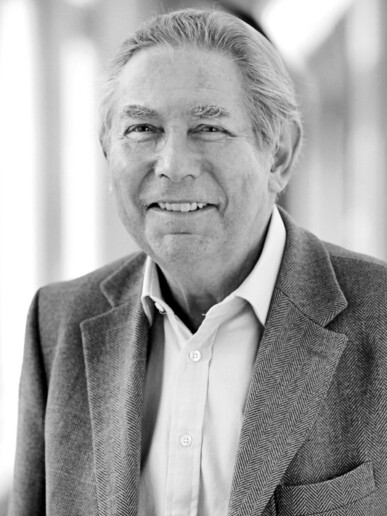
Antony Polonsky
Professor Emeritus at Brandeis University, author of numerous monographs (RAS, UK).
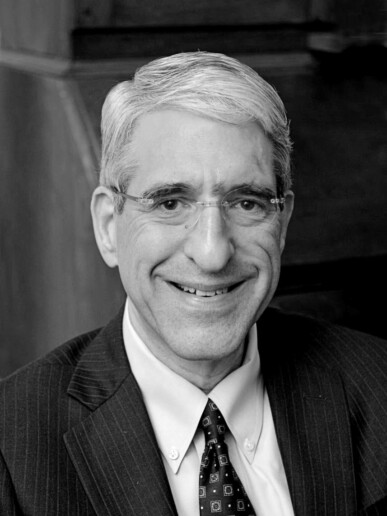
Peter Salovey
Professor of Social Psychology, President of Yale University, Honorary Doctor of VMU (USA).
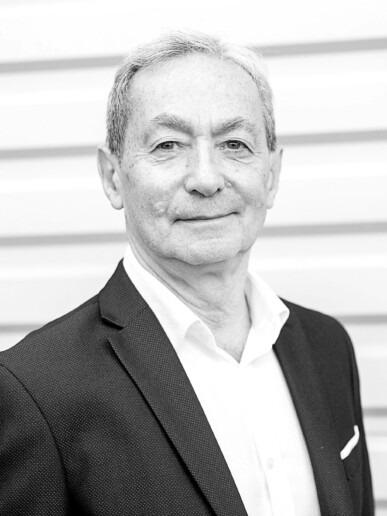
Gercas Žakas
Chairman of Kaunas Jewish Community (LT).

Zev Krengel
Vice President of the Jewish Board of Deputies of South Africa (RAS).
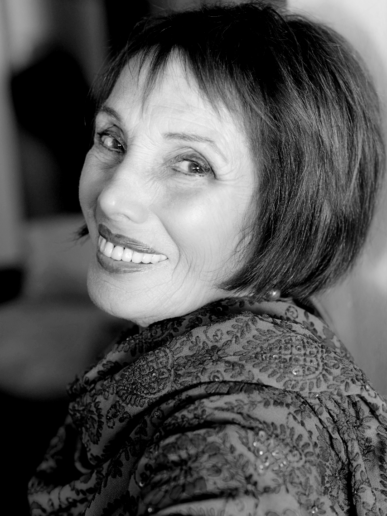
Tsvia Walden
Psycholinguist, Professor at Ben-Gurion University of the Negev (IL).
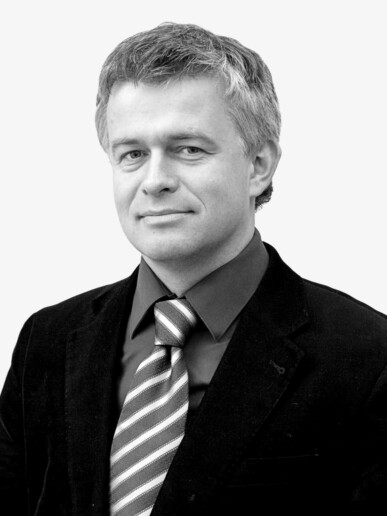
Šarūnas Liekis
Professor, Dean of the Faculty of Political Science and Diplomacy, VMU (LT).
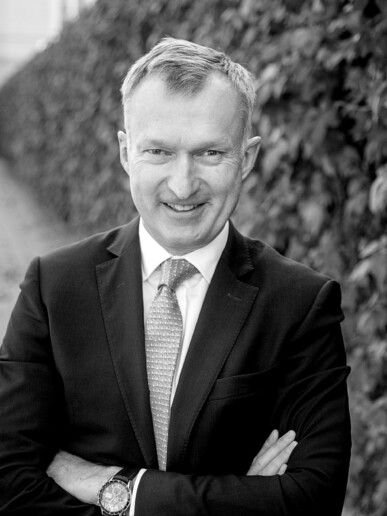
Darius Degutis
Ambassador of the Republic of Lithuania for Special Assignments, former Ambassador of the Republic of Lithuania to Poland, Israel, South Africa (LT).

Miša Jakobas
Founder and former director of the ORT Gymnasium in Vilnius, founder and former director of the ORT Gymnasium in Vilnius, mentor of the Lyceum “Sokratus” of Vytautas Magnus University (LT)
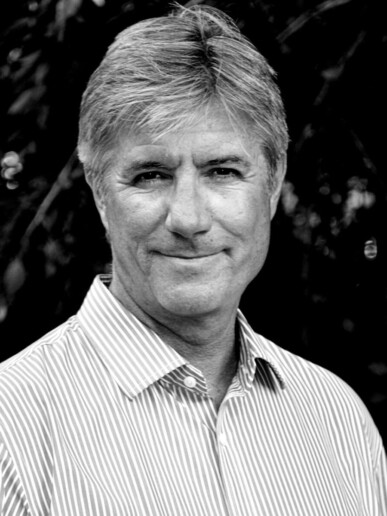
James E. Young
author and distinguished University Professor Emeritus, Founding Director of the Institute for Holocaust, Genocide, and Memory Studies, University of Massachusetts Amherst (USA).
Partners
